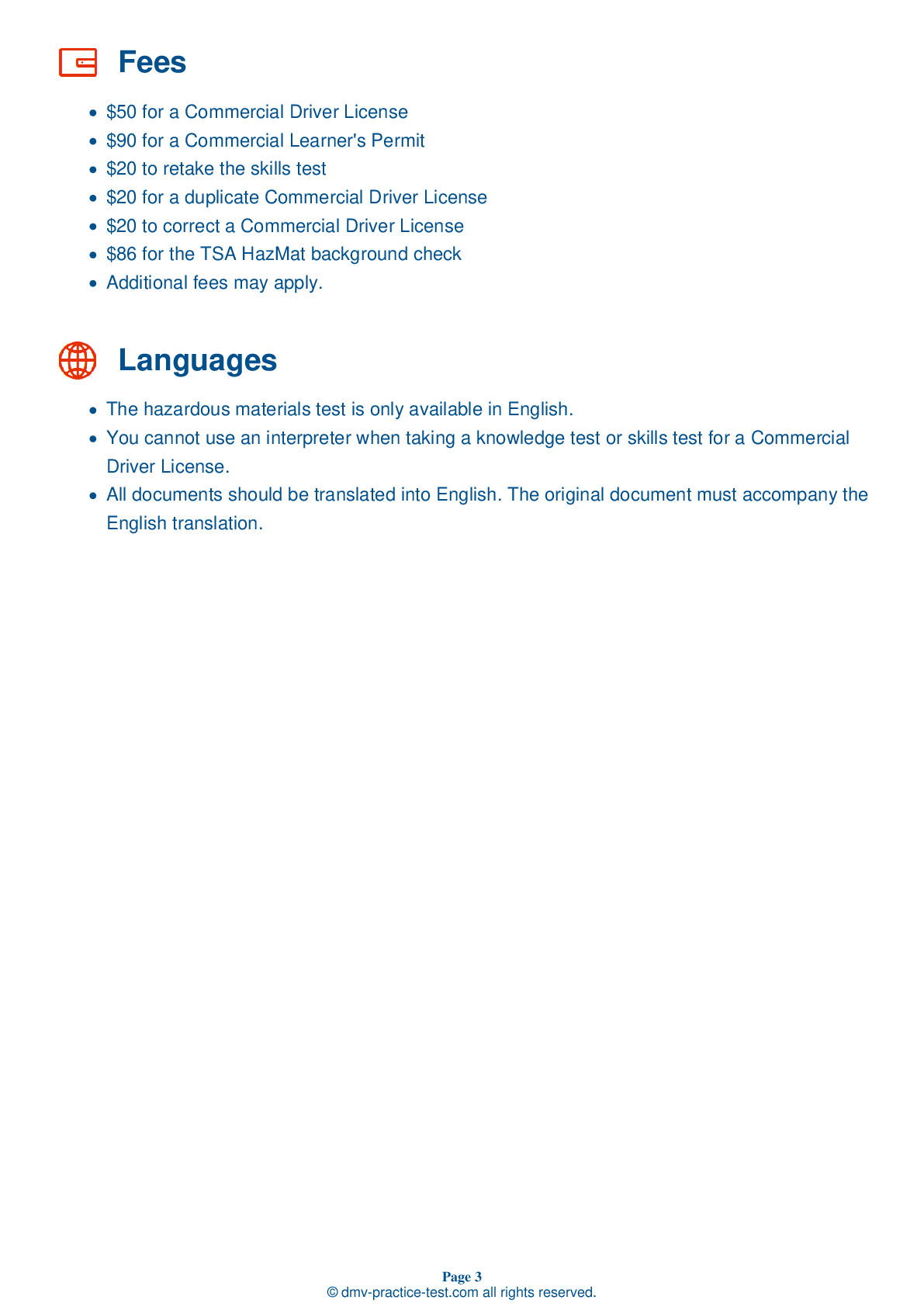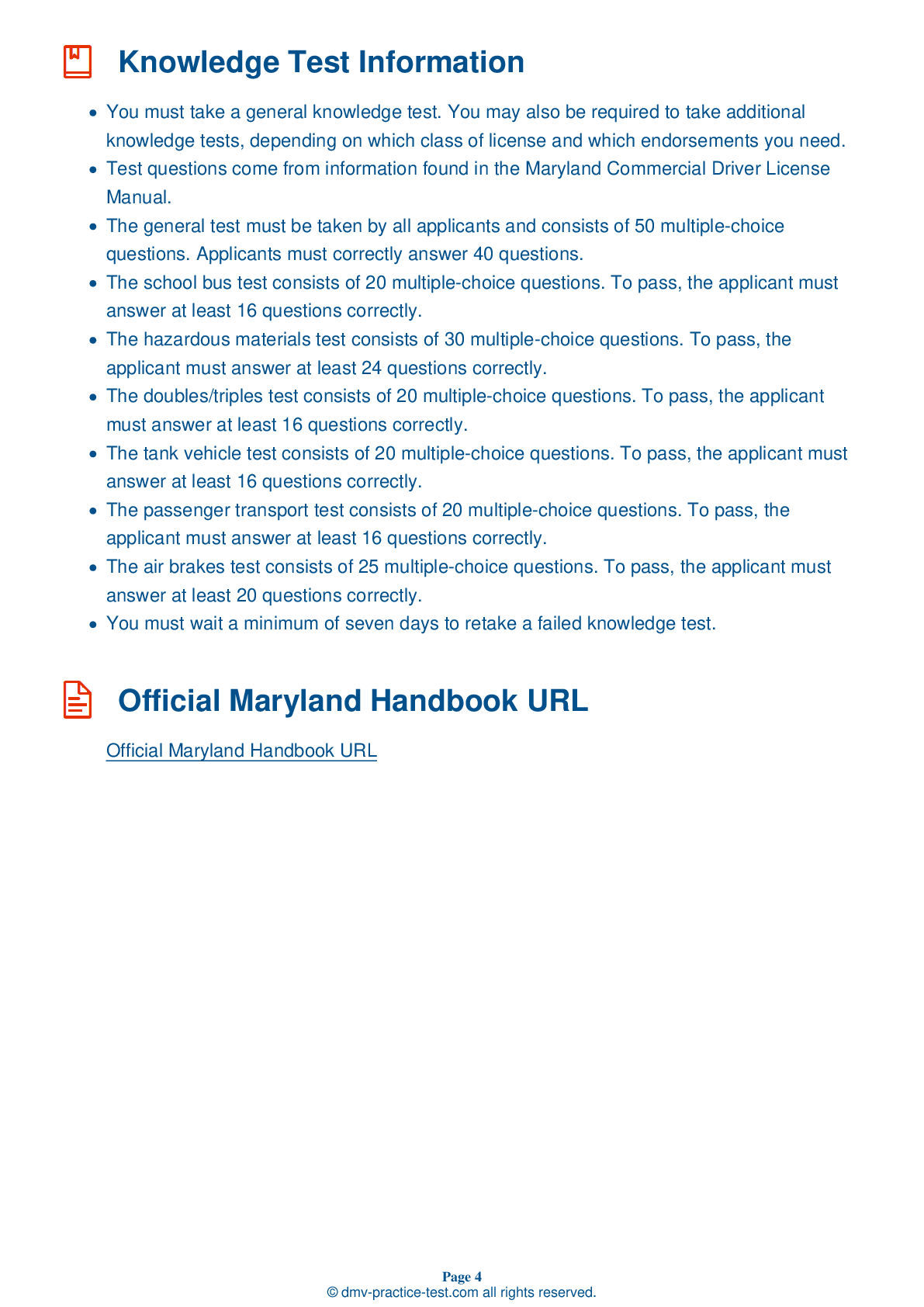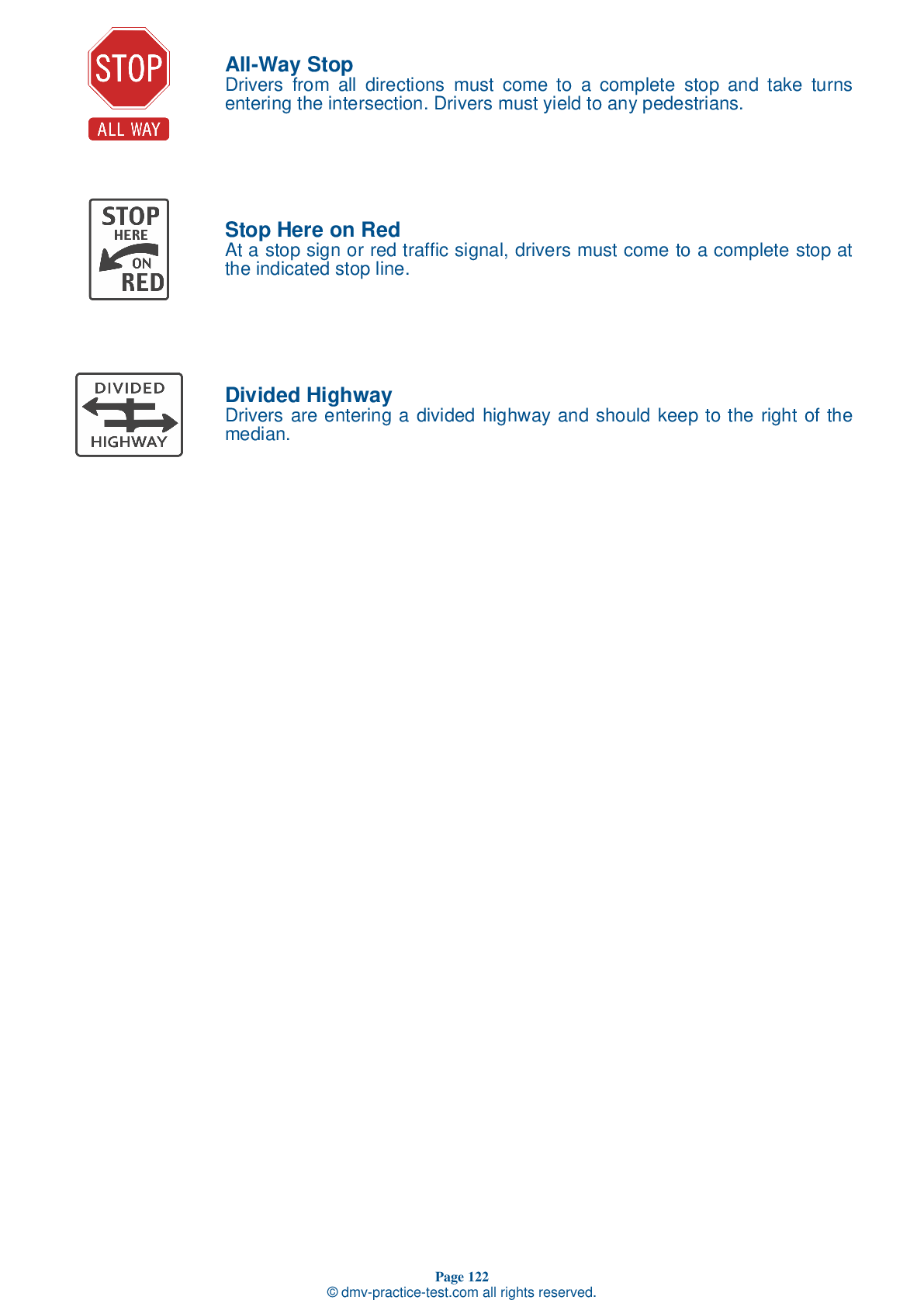Knowledge Test Class A #1
Class A Driving Test | Maryland 2025 #1 Page 2 of 7
Train for FREE online with our Maryland class A license test. The official exam test consists of several obligatory parts, with all of them checking your knowledge of different blocks of road rules. If you need to obtain a MD CDL class A permit in 2025, practice as much as possible. Free sample tests published on our website will help you check and improve your knowledge and boost your grades. Please bear in mind that CDL class A requirements may vary from state to state.
50
40
20
8 . When approaching your vehicle as part of your pre-trip inspection, you should look for what as a sign of trouble?
When approaching your vehicle for an inspection, you should look underneath the vehicle for fresh leaks of oil, coolant, grease, or fuel. Seeing a fresh puddle of any of these fluids could indicate a safety issue with your vehicle.
9 . Which of the following determines your blood alcohol concentration (BAC)?
The color of the drink
The three main factors that determine a person's blood alcohol concentration (BAC) are how much alcohol was consumed; how fast it was consumed; and the person's body weight. The only thing that can lower a person's BAC is waiting for the alcohol to leave their system naturally.
10 . If you plan to transport hazardous materials, you will:
You must have a hazardous materials endorsement to transport any hazardous materials that require the vehicle to be placarded.
11 . How can you prevent drowsiness before a trip?
Schedule long trips at night.
To prevent drowsiness on a long trip, strategies include getting adequate sleep beforehand; planning out the route and stopping points in advance; driving with a passenger; and driving at times during which you are normally awake.
12 . A high center of gravity:
Improves fuel efficiency.
A high center of gravity makes a vehicle more likely to tip over.
13 . An Anti-Lock Braking System (ABS):
Beginning between 1997 and 1999, most commercial vehicles, trailers, and dollies are required to be equipped with ABS.
14 . Which of the following is not a warning sign of fatigue?
Staying within your lane



